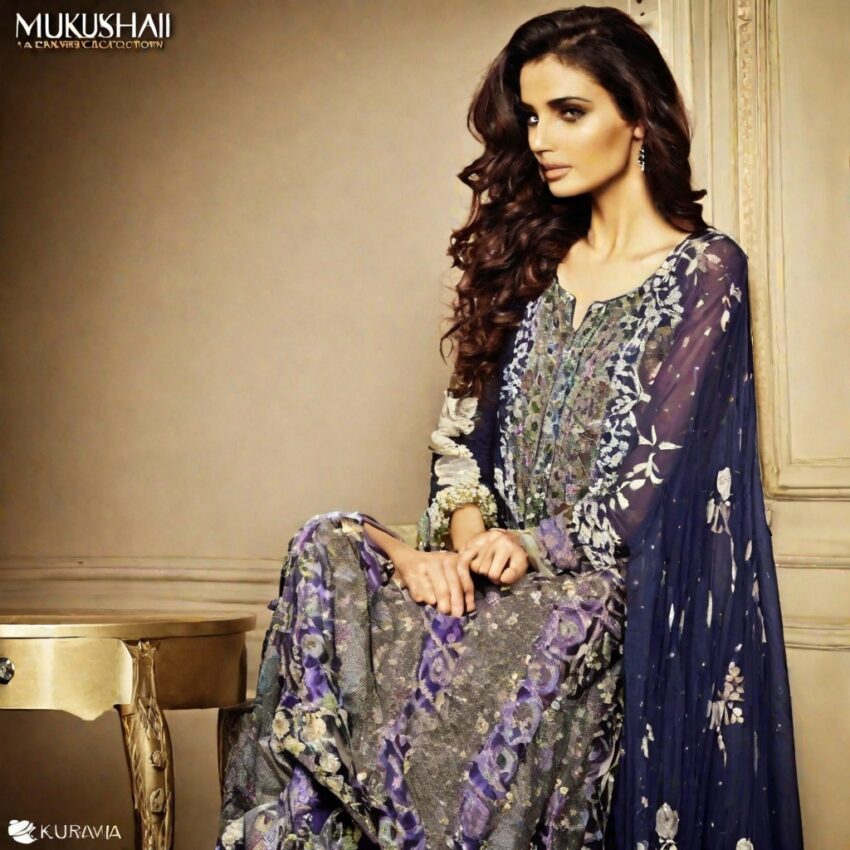In the world of traditional craftsmanship, certain art forms transcend time, weaving a rich tapestry of culture and heritage. Mukesh and Kamdani dressing, with its intricate threadwork, stands as a testament to the skill and artistry embedded in the fabric of centuries-old traditions. This article explores the mesmerizing world of Mukesh and Kamdani, delving into their history, techniques, and the contemporary resurgence of these exquisite forms of dressing.
Historical Tapestry: Mukesh and Kamdani Origins
Mukesh and Kamdani, both born from the looms of India, have roots deeply entwined with the country’s cultural history. Mukesh, also known as Mukaish, finds its origins in the city of Lucknow, an epicenter of traditional crafts. The word ‘Mukaish’ itself means ’embroidery with twisted thread,’ reflecting the technique’s essence. Kamdani, on the other hand, traces its roots to the Mughal era, showcasing the influence of Persian craftsmanship on Indian textiles.
Techniques Unveiled: Mukesh and Kamdani Mastery
The allure of Mukesh lies in its meticulous use of metal-wrapped threads, usually silver or gold, to create patterns that shimmer and catch the light. The process involves twisting the metal-coated threads into various designs, producing a visual spectacle that elevates any fabric it adorns. This technique not only adds a touch of opulence but also symbolizes the rich heritage of the craft.
Kamdani, while sharing similarities with Mukesh, distinguishes itself through its use of small, fine needles known as ‘Kam.’ These needles are employed to add intricate patterns by weaving silk or metallic threads onto the fabric, creating a delicate and ornate finish. The precision required in Kamdani dressing is awe-inspiring, as artisans create magical motifs that seem to dance across the fabric.
Master Craftsmen: The Artisans Behind the Magic
At the heart of Mukesh and Kamdani dressing are skilled artisans who have inherited the craft through generations. These master craftsmen, often working in small ateliers or family workshops, bring a wealth of experience and a deep understanding of the traditional techniques. The intricate designs and patterns are not just stitches on fabric; they are a manifestation of the artisan’s passion, dedication, and connection to their cultural roots.
The training of these artisans is a laborious process, with apprentices spending years perfecting their craft under the guidance of seasoned masters. The hands that create Mukesh and Kamdani masterpieces are the hands that have held the torch of tradition for centuries, passing it down from one generation to the next.
Timeless Elegance: Mukesh and Kamdani in Fashion
In recent times, Mukesh and Kamdani dressing have witnessed a revival in the fashion world. Designers, both in India and internationally, have recognized the timeless elegance and cultural significance embedded in these traditional techniques. Mukesh and Kamdani have found their way onto runways, red carpets, and into the wardrobes of fashion enthusiasts seeking a blend of tradition and modernity.
Bollywood, India’s prolific film industry, has played a pivotal role in popularizing Mukesh and Kamdani dressing. Celebrities adorned in intricately embroidered ensembles have sparked a renewed interest in these traditional crafts, making them not just a symbol of cultural pride but also a fashion statement.
The Contemporary Twist: Mukesh and Kamdani in Modern Design
While Mukesh and Kamdani have deep roots in tradition, contemporary designers are experimenting with these techniques to create modern masterpieces. The fusion of traditional craftsmanship with contemporary design sensibilities has given rise to a new genre of fashion that pays homage to the past while embracing the future.
Designers are incorporating Mukesh and Kamdani into a variety of clothing, from bridal wear to casual chic outfits. The versatility of these techniques allows them to seamlessly blend with different fabrics and styles, catering to a diverse audience with an appreciation for both heritage and innovation.
Challenges and Conservation Efforts
Despite the resurgence of interest, Mukesh and Kamdani dressing face challenges in the modern world. Mass production and the rise of machine-made embroidery pose a threat to these traditional crafts, putting the livelihoods of skilled artisans at risk. The time-consuming nature of Mukesh and Kamdani, coupled with the demand for quicker production, creates a delicate balance between tradition and commercial viability.
However, various organizations and initiatives are working tirelessly to preserve and promote Mukesh and Kamdani dressing. These efforts include skill development programs, market linkages for artisans, and awareness campaigns aimed at educating consumers about the value of handmade, traditional craftsmanship. The goal is not just to sustain these art forms but also to ensure that future generations inherit a vibrant legacy of cultural richness.
Conclusion: A Tapestry of Tradition and Innovation
In the intricate stitches of Mukesh and the delicate weaving of Kamdani, one discovers a living legacy that transcends time. These dressing techniques are not merely threads on fabric; they are a testament to the resilience of tradition in the face of modernity. As the world embraces the allure of Mukesh and Kamdani, it is essential to recognize and appreciate the hands that weave the magic, ensuring that the tapestry of tradition continues to flourish in the ever-evolving landscape of fashion and craftsmanship.

